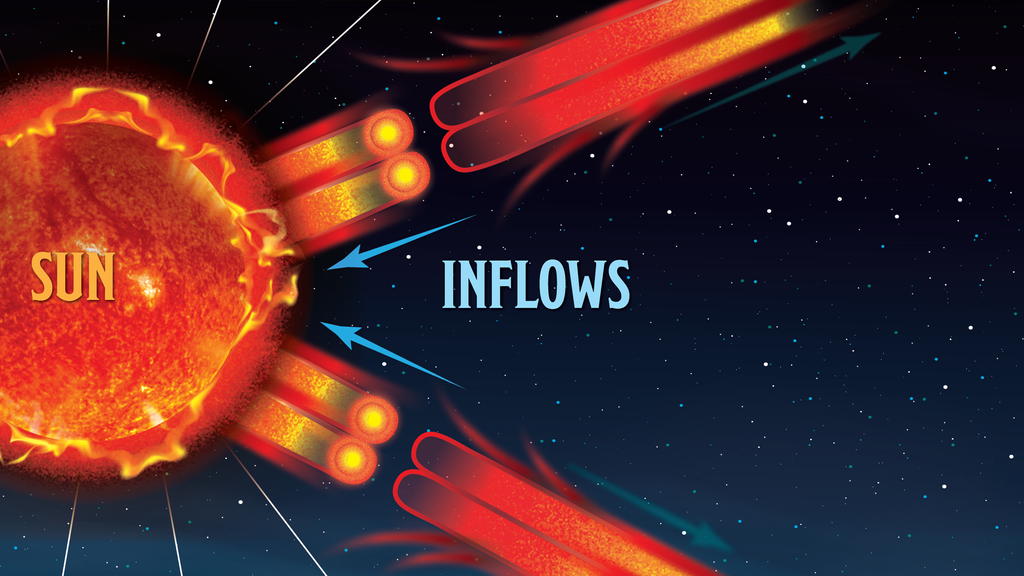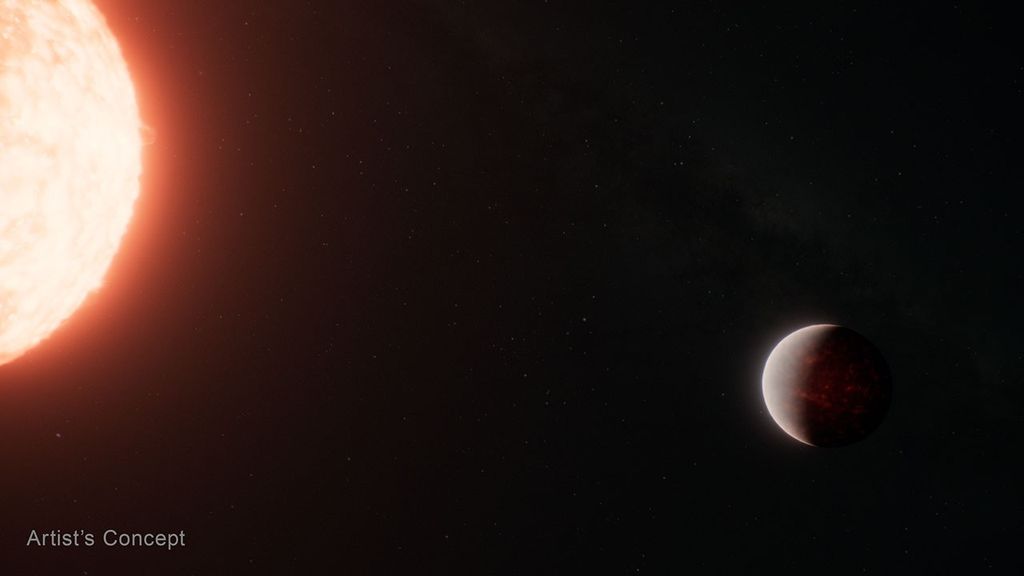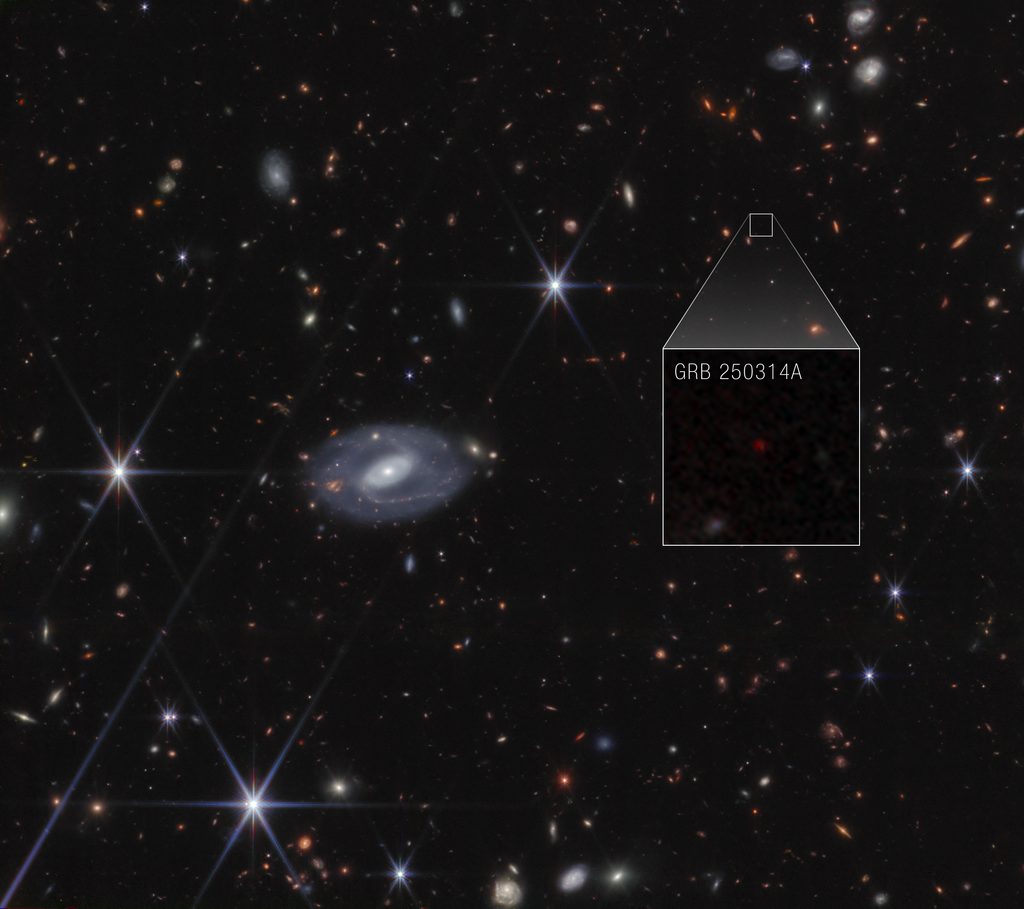This narrow, deep view of the universe reveals a plethora of faint galaxies, as seen in visible and infrared light by the Hubble telescope.
The reddish galaxies are glowing in infrared light; the bluish galaxies are glowing in visible light. Several distinctive types of galaxies can be seen in these views: blue dwarf galaxies, disk galaxies, and very red elliptical galaxies. A bright, nearby, face-on spiral galaxy appears at upper right. Some of the brightest objects in the field are foreground stars in the halo of our own Milky Way Galaxy. By combining views in infrared and visible light, astronomers have a better idea of the shapes of galaxies in the remote universe and of the fraction of galaxies that are old or dust-obscured at early epochs.






























